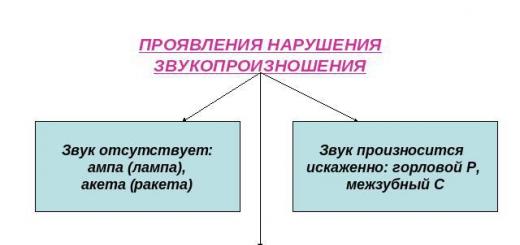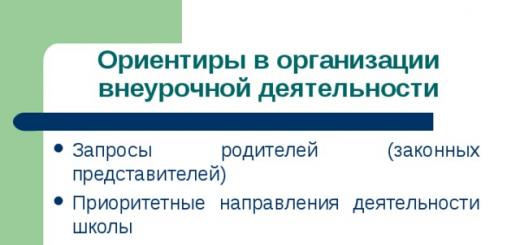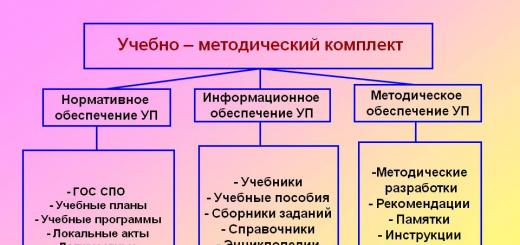Reading time: 6 minutes.
The magical age from two to five flies by quickly, when parents are thrilled by any new word mastered by their home linguist. Baby babble seems richer and richer than classic adult speech. And the parents themselves are not averse to lisping with their child in his bizarre language, wittingly or unwittingly creating situations for the incorrect formation of speech and pronunciation skills.
Writing and pronunciation of the letter and sound L
Caution: physiological dyslalia
But by the age of four you need to be on your guard: the time for correct speech comes, and the baby simply does not know how to pronounce some sounds. And if you leave it to chance, and don’t teach him to speak correctly in time, you can make your child the subject of mockery and ridicule for the rest of his life. And he will probably have problems with spelling. Along with the difficult consonant “R”, many children do not know how to pronounce the letter “L”.
This speech defect is called physiological dyslalia in speech therapy and is quite common among children from four to six years old.
 Types of pronunciation disorders
Types of pronunciation disorders Over time, many people themselves can learn to speak correctly. This is how a child can distort the letter "L".
- The baby does not hear this sound and completely misses it: instead of “ruler” he says “frost”.
- “L” is replaced by the sound “U” or “V”: “spoon” - “oozhka”; "Larissa" - "Varisa". At the same time, children try to pronounce “L” not with the tip of their tongue, but with their lips
- Instead of “L” it is pronounced “Y”: “hammer” - “myotok”
- The child confuses the hard and soft letter “L”.
Before contacting a speech therapist, it is useful for parents to become familiar with the rules of pronunciation of the sound L and teach them to their child. Perhaps after home lessons he will begin to say this sound correctly.
Correct articulation of the L sound

Before you start practicing, you need to practice pronouncing this sound according to all the rules in front of a mirror. It is likely that the child received a speech defect as a result of the incorrect pronunciation of the letter “L” by someone in the family.
Pronunciation of the hard sound L

After strengthening the solid “L” with a series of words, we continue to ensure that the child clearly pronounces all sounds, correct and remind him how to correctly pronounce this particular letter.
Articulation gymnastics
Exercises that increase the mobility of the tongue and lips will help you quickly learn how to correctly pronounce various sounds, and this applies not only to one letter “L”.
 L sound articulation profile
L sound articulation profile 
Today, researchers have proven that fine motor skills of the hands are directly related to speech, so modeling, finger games, and small toys for a baby are necessary to learn to speak correctly.
 Developing hand motor skills helps develop speech
Developing hand motor skills helps develop speech If, after much effort, the child still cannot pronounce the letter “L” correctly, it is necessary to contact a speech therapist. Perhaps it is a malocclusion, a neurological disease, or stress. It is important to remember that the age from 4 to 6 years is the most favorable for learning correct speech; later it will be necessary to eliminate the ingrained skill, and this is more difficult to do.
When mastering speech skills, children often distort words. They also experience difficulties in pronouncing individual sounds. The notorious “rrrr” is known to many, but what to do if a child changes the letter “l”? The defect can be easily corrected. Parents should show the child to a speech therapist - the specialist will determine the cause of the defect and determine the method of training that will help eliminate it.
If there are speech disorders, it is better, if possible, to show the child to a specialist: he will determine the degree of deviation and help the family cope with itWhat influences the occurrence of a defect?
Most sounds are perfectly mastered by a child by the age of 4-4.5 years. If you notice that your baby is having difficulty pronouncing several letters or one “l” sound, look for the reasons. One of the factors may be a speech defect in an adult who is in constant contact with the baby. The child imitates the speech of mom or dad. Pronunciation problems have also been observed in children growing up in bilingual families. It is difficult for a child to master two languages at once; he gets confused and replaces the sounds of one language with the sounds of another. Among the physiological reasons we note the following:
- disorders that arise during the development of speech hearing (the child hears sounds incorrectly);
- pathologies of the hearing aid and speech breathing;
- changes in the structure of the articular apparatus (in the case of the sound “l” this may be a shortened frenulum).
All anatomical changes are determined by a specialist. Self-diagnoses often lead to incorrect treatment and worsening of the defect.
If your child is diagnosed with a shortened frenulum, there is no need to worry. For a long time, the defect was corrected using an incision, but today a new technique has been developed in which the frenulum is stretched to the required size using special exercises.
Pronunciation options for the distorted sound “l”
When trying to pronounce “l”, the child may replace it with other sounds. There is no definite dependence on the reason that caused the defect - the baby speaks in a way that is easier for him. It might sound like this:
- the child misses the letter “l” (shovel – opata);
- replaces “l” with “y” (horse - horse);
- pronounces the sound “y” instead of the sound “l” (milk - moyoko, spoon - yoshka);
- speaks the hard “l” well and replaces the soft letter with another.
Correct articulation
To fix something, you need to know what it looks like right. It's the same with the sounds we make. It is unlikely that you will be able to pronounce the letter “p” without connecting your lips. In order to make the sound “l”, you need to:
- rest the tip of the tongue against the base of the upper teeth or into the gap formed between the upper and lower teeth;
- when pronouncing the letter, release air strongly along the sides of the tongue;
- The edges of the tongue should not come into contact with the upper and lower teeth located on the sides of the jaw.
If the speech therapist does not find any serious problems with the articulation apparatus in your baby, the correct pronunciation of “l” can be easily done at home. A few lessons with your baby are enough to teach him to reproduce sound well. A few special exercises will make your task easier and your child will enjoy it. They will improve the mobility of the muscles of the larynx, tongue and lips.

 In order for the child to understand where he is making a mistake, it is necessary to sit him in front of a mirror and practice the correct position of his tongue and lips
In order for the child to understand where he is making a mistake, it is necessary to sit him in front of a mirror and practice the correct position of his tongue and lips Learning to pronounce the sound “l”
Classes at home are comfortable for both the child and the parents. Experts have developed various exercises that you can do with your baby, turning them into a fun game. Children love to make faces, but our exercises also have benefits. Through a fun and exciting activity, we teach the baby and give him the opportunity to train his tongue for the correct pronunciation of “l”. List of exercises:
- Smile . Ask your baby to smile widely without opening his lips. Let him hold the smile for 8-10 seconds. Repeat the exercise 7-8 times a day.
- Breeze. Open your mouth slightly, insert the tip of your tongue between your lips, and lightly “bite” it, squeezing it with your lips. Leaving your tongue in this position, you need to blow hard for three minutes.
- Clattering. The baby should click like a horse, changing the intensity of the sound. Ask the child not to move the lower jaw, but to click only with the tongue and the upper jaw. The first part of the exercise is done with acceleration, in the second the clicking should be quiet, as if the horse is sneaking.
- Delicious jam. Invite your child to lick his lips with his tongue as if he had eaten something very tasty. Movements should be wide and circular.
- Long tongue . Favorite exercise for kids. Children stick out their tongue to its full length and try to reach their nose or chin.
- Tube. Several times a day, ask your child to roll his tongue into a tube.
- Long "s". The tip of the tongue is retracted deep into the mouth, the back of the tongue rises to the palate, the child draws out the sound “s”. The exercise is difficult, but it improves the flexibility of the tongue.
- Breathing. Accompany your lessons by improving your breathing skills. Let your baby blow bubbles more often and encourage his desire to sing. In summer, the baby can blow away ripe dandelions.
- Fine motor skills. Fine motor exercises help stimulate nerve endings. Modeling, drawing, cutting and gluing appliqués have a positive effect on the development of speech skills and enhance the intellectual development of a little person.
It will also be useful to pronounce tongue twisters and combinations of letters in which “l” is adjacent to different vowels.


How to conduct classes correctly?
When starting classes, remember that in front of you is a small child. The best way to teach him anything is through play. Speech therapy exercises carried out under pressure quickly get boring for kids, so you should not force the child to repeat them for a long time. Start with 1-2 times a day for 3-4 repetitions. Use your own example. Sit with your baby near the mirror so that he can see how he is doing. Children love to imitate the actions of adults; use their interest for educational purposes. Accompany every success of your baby with praise, explain to him what you are teaching and why.
In what situations do you need the help of a speech therapist?
Despite the ease of adjusting the sound, it may turn out that practicing at home will not lead to success. The reasons may be different:
- Russian is not your family’s native language, and its adult members speak with an accent;
- some adults already have speech defects and find it difficult to conduct classes;
- Long lessons could not help the baby learn to pronounce the letter “l”.
In such situations, you need to contact a specialist. A speech therapist will help you correct the exercises and suggest other ways to correct them.
You will need a lot of patience and the ability to entice your child. The slightest progress should be noticed and praised. If your child does not succeed in something, do not scold him, so as not to discourage him from learning.
Difficulties in pronouncing the letter “r” become a common problem (more details in the article:). We recommend that you refer to one of our materials that tells you how to deal with this problem. The principle is almost the same: it is necessary to stimulate children so that they speak words with this sound more often. Study the articulation when pronouncing “r”, show it to your baby. Use pictures of animals with “r” in their names in your classes, and learn poetry and tongue twisters with it.

Clinical and perinatal psychologist, graduated from the Moscow Institute of Perinatal Psychology and Reproductive Psychology and Volgograd State Medical University with a degree in clinical psychology
At an early age, a child’s imitative abilities are extremely great; he easily and naturally learns a huge number of new words, enjoys learning to pronounce the words he likes, and strives to use them more often in speech. However, his articulatory capabilities are not yet perfect; phonemic hearing develops gradually, so the correct pronunciation of complex sounds will remain inaccessible to the child for a long time.
A child can master some exercises in one or two lessons, while others are not given to him right away. Perhaps developing a certain articulation pattern will require many repetitions. Sometimes failure causes a child to refuse further work. In this case, do not fix your attention on what is not working. Encourage him, return to simpler, already worked out material, reminding him that once this exercise also did not work out.
Rules and nuances
To make it more interesting for the child, invite him to become a teacher, educator: take the child’s favorite toy (doll, teddy bear) and let them do articulation exercises, pronounce sounds and syllables, repeat words and phrases.
Articulation gymnastics must be carried out daily so that the motor skills developed in children are consolidated and become stronger.
Direct work on the development of articulatory motor skills should take at least 5 minutes, and the entire lesson should take 10-12 minutes. Perform the gymnastics itself in front of a mirror.
Performing articulation exercises is difficult work for a child. Praise and encouragement will give the child confidence in his abilities and will help him quickly master this or that movement, and therefore quickly master the correct pronunciation of speech sounds.
Sound [l]
To correctly pronounce a sound, you need to develop: lifting the tip of the tongue up, lifting the back of the back of the tongue up.
We call the sound. Bare your teeth in a “smile” and bite your tongue wide, without sticking it out too much or straining. Do not make your tongue narrow, otherwise the sound will soften. While biting the tongue, we simultaneously pronounce the sound [a], getting - la-la-la, then we slow it down and just start humming: “l-l-l” (without the vowel “a”). Make sure that the corners of your mouth are stretched in a “smile”: warm air comes out through them.
Sometimes, experiencing tension, a child cannot engage the vocal folds when pronouncing the open syllable “la-la-la.” In this case, you can start with the vowel “A” - “a-la-la”, “a-la-la”. The wide tongue rests constantly on the lower teeth without tension. If a child can hold out the sound [l] for a long time, then it means he has mastered it and can reinforce it.
We fix the sound. To reinforce the sound [l], [l "] in speech, you can use the game “Wonderful Bag” or a version of the game “What is hiding under the tablecloth?”. The child must determine by touch what object is in the bag or under the tablecloth. Objects to feel are selected such that the desired sound in the name words is in different positions: at the beginning of the word, in the middle, at the end.
To reinforce sounds, use the ability of four-year-old children to easily memorize poetry. Read poems by Marshak, Barto, Zakhoder and other children's authors to children, ask the child to complete the last word in a line, the last line in a poem, then a quatrain, then the entire poem.
 Exercise
Exercise
Find pictures in the names of which the sound [l] is at the beginning of the word: paw, lamp, shovel, lotto, bow, moon; in the middle: saw, blanket, doll, clown; and at the end: table, floor, woodpecker. Then come up with sentences with these words, for example: Mila put the lamp on the table.
Sound [l"]
After automating the [l] hard sound, the soft sound is easy to imitate. In front of the mirror, pronounce the syllables: “li-li-li”, while your lips are in a smile, the upper and lower teeth are visible, and the tip of the tongue knocks on the tubercles behind the upper teeth.
Disadvantages in the pronunciation of the sounds [l], [l "] are called lambdacisms. Lambdacisms include the absence of the sound [l] and its distortion (interdental, nasal or bilabial sound, etc.).
Since the articulation of the hard sound [l] is more difficult than the articulation of the soft sound, it is most often violated.
Replacing the sounds [l], [l"] with other sounds is called paralambdacism.
Reasons leading to incorrect pronunciation of the sound [l]: shortened hyoid ligament, limiting upward movements of the tip of the tongue; weakness of the tongue muscles; phonemic hearing disorders.
Distortion of sounds [l], [l"]
The sound is pronounced interdentally. The tip of the tongue, instead of rising behind the upper incisors, extends out between the teeth.
Nasal pronunciation of sound. The tongue touches the back of the tongue to the soft palate, and not the tip to the upper incisors, as happens with the correct pronunciation of the sound [l]. In this case, the air stream partially or completely passes through the nose. The child’s speech will sound like this: “Mouse vesengo zhinga, on the fluff in unggu spanga.”
Replacement with sound [th]. In this disorder, the tip of the tongue remains down instead of rising behind the upper incisors, and the middle part of the back arches upward instead of down. The child says this: “The mouse is more cheerful than alive, sleeping on the fluff.”
Replacement with sound [y]. With this disorder, the lips, rather than the tongue, take an active part in the formation of sound. With this replacement, the child’s speech sounds like this: “Mouse veseuo jiua, on the fluff in uguu spaua.”
Replacement with sound [s]. With this disorder, the back of the back of the tongue is raised and the tip is lowered. Children do not notice that they are replacing the sound, and adults often believe that the sound [l] is skipped. The child says: “The mouse is happy and alive, on the fluff of the bed.”
Replacement with sound [e]. With such a replacement, the tongue does not take part; the lower lip moves towards the upper incisors. Children and adults often believe that this is not a speech impediment, but only a lack of clarity in pronunciation. With this replacement we hear: “The mouse is cheerfully alive, in peace in ugvu spava.”
Replacement with sound [g]. In this case, the tip of the tongue does not rise to the upper incisors, but falls and is pulled away from the lower incisors, the back of the back of the tongue rises and rests against the soft palate, instead of just rising. The child’s speech sounds like this: “The mouse has a lot of fun, the fluff in the ugg is spaga.”
Games to prepare for the pronunciation of the sound [l]
Pancake
Goal: to develop the ability to hold the tongue in a calm, relaxed position.
Smile, open your mouth slightly and place your wide tongue on your lower lip (do not pull your lip over your lower teeth). Hold in this position for a count from 1 to 5-10.
Delicious jam
Goal: to develop an upward movement of the wide front part of the tongue.
Using the wide tip of the tongue, lick the upper lip, moving the tongue from top to bottom, but not from side to side. Don't help with your lower lip.
The steamboat is humming
Goal: to develop lifting of the back and root of the tongue, to strengthen the muscles of the tongue.
With your mouth open, pronounce the sound [s] for a long time. Make sure that the tip of your tongue is at the bottom, in the back of your mouth.
Turkey
Goal: to develop the elevation of the tongue, to develop flexibility and mobility of its front part.
With your mouth open, move the wide tip of your tongue back and forth across your upper lip, try not to lift your tongue from your lip, as if stroking it, gradually speed up your movements until you get the sound [blbl] (like a turkey babbling).
Swing
Goal: to develop the ability to quickly change the position of the tongue, develop flexibility and accuracy of movements of the tip of the tongue.
With your mouth open (lips in a smile), place the tip of your tongue behind your lower teeth and hold in this position for a count of 1 to 5, then lift the wide tip of your tongue behind your upper teeth and hold in this position for a count of 1 to 5. So change the position one by one tongue 6 times. Make sure your mouth remains open.
Let's click!
Goal: strengthen the tip of the tongue, develop tongue elevation.
With your mouth open, click the tip of your tongue, first slowly, then faster. Make sure that the lower jaw does not move, only the tongue works. Click the tip of your tongue silently. Make sure that the tip of your tongue rests against the roof of your mouth, behind your upper teeth, and does not stick out of your mouth.
Pronouncing syllables with movements
Words in motion
Lamp
Lam - Rotational movement of the hands (“flashlight”).
pa - We press our fists to our chest.
Bulb
The light bulb has burned out. – We make “flashlights”.
She probably got sick. – We tilt our head to the shoulder and bring our folded palms to our cheeks.
Pure speech
La-la-la, la-la-la!
The swallow made a nest.
Lo-lo-lo, lo-lo-lo!
The swallow is warm in the nest.
Patter
The husky and lapdog barked loudly.
The Oriole sang for a long time over the Volga.
Silly baby
Silly baby
I sucked on an ice cube
I didn't want to listen to my mother
That's why I got sick.
Svetlana Ulyanovich-Volkova, Svetlana Murdza, speech therapists.
Municipal educational institution "Krasnenskaya sosh named after. M.I. Svetlichnaya"
teacher speech therapist
Popova O.S.
Articulation exercises for producing the sound [L].
To produce sound, long and hard work is required to “tune” the articulatory apparatus. Developing the necessary movements of the lips and tongue. The work begins with introducing the childwith organs of articulation: - lips, upper and lower; teeth behind the lips, upper and lower; behind the upper teeth there is a tubercle; behind the tubercle the hard palate begins, which passes into the soft palate and ends with the velum palatine with a small uvula;
Here is the tongue, it has a movable tip; the back of the tongue can also rise and fall. Under the tongue there is a sublingual ligament (frenulum), etc.
There are muscles in our cheeks, lips, and tongue that need to be trained. And special gymnastics will help us - articulation.
For all types of lambdacism, you should first learn several articulation exercises, which must be performed daily in front of the mirror, counting (from 1 to 5), for 6-10 minutes twice a day:
1. “Smile” - hold your lips in a smile, exposing your upper and lower teeth.
2. “Tube” - extend your closed lips forward.
3. “Let’s punish the naughty tongue” - place the tongue on the lower lip and, spanking it with your lips, say: “Pa-pa-pa.”
4. “Let’s brush the upper teeth” (from the inside) - with a wide tongue from side to side at the upper alveoli (tubercles).
5. “Sail” - the tip of the wide tongue rests on the upper front incisors. The shape of the tongue resembles a sagging hammock. The exercise is static, it must be performed counting: the longer the tongue is held, the better.
6. “The cat laps milk” - a wide tongue moves from top to bottom and licks the upper lip.
7. “Turkey chatter” - tongue movements, as in the previous exercise, only the pace is fast. The movements of the tongue are accompanied by sounds characteristic of an angry turkey, something like: “bl-bl-bl-...”.
8. “Swing” - open your mouth slightly, smile broadly. At the count of “one-two”, the tip of the tongue rests first on the upper and then on the lower incisors (from the inside).
If the tongue stubbornly does not want to rise up and stay behind the upper teeth, a proven exercise will come in handy:
“Horse” - click the wide tip of the tongue on the palate behind the upper front incisors. Mandatory condition: the mouth is slightly open, but the lower jaw is absolutely motionless!
To securely fix the tongue in the “upper” position (on the palate), perform the following exercise:
“Fungus”: the upper surface of the tongue is sucked to the palate, while the hyoid frenulum is stretched.
The above exercises must be performed for 2-4 weeks. The main requirement is to develop the ability to:
Maintain the desired articulatory position correctly for 5 seconds;
Perform movements accurately;
Monitor the equal participation of the left and right halves of the tongue and lips in performing movements.
4. Methods of sound production [L]
If there is no sound at all in the child’s speech, then it is easiest to add it. In this case, you will not have to remove the false stereotype of sound pronunciation.
1. By imitation: Show your childcorrect articulation of the sound [L]:
The lips are in a smile, the mouth is slightly open, the teeth are open (the distance between the upper and lower teeth is 1 finger);
The wide tip of the tongue is raised and pressed against the alveoli (to the tubercles above the upper front teeth);
The exhaled air passes along the sides of the tongue, into the cheeks (if you touch your cheeks with your palms, you can feel their vibration).
Say the sound [L] and ask your child to repeat. The sound [L] occurs when the tongue is lifted from the alveoli.
2. Setting from interdental sound (cannot be done with a child who has interdental lambdacism):
This method of producing the sound [L] can be used with various types of lambdacism and paralambdacism.
Tell your child a fairy tale“How a little steamer learned to hum”
Once upon a time there lived a small steamboat. He walked on the sea and carried cargo. But the big ships didn’t notice him and didn’t even respond. And all because the little steamer’s voice was very weak, and instead of a drawn-out and drawling whistle: “L”, it hummed something indistinct and quiet. The little steamboat decided to learn how to whistle correctly. He began to try different greeting options: “Uh!” ABOUT! No, that’s not it!” Out of frustration, the little steamboat bit his tongue and said: “Y.” And then a miracle happened: a clear and distinct sound [L] sounded over the water surface! The little steamboat thought that he had misheard, and repeated: “Y”, biting his tongue again. The sound [L] became even more distinct. Hearing the voice of the small steamboat, the large ships began to answer him with loud and drawn-out whistles: “L!”, “L!” So the little steamer learned to whistle correctly.
The child bites the tip of the tongue and pronounces the sound [Y] in a drawn-out manner. At the same time, the sound [L] should sound. Although, perhaps not the first time. After the sound [L] is obtained in isolation, attach it to the vowels: LA, LO, LU, LY, LE. At first, you will still have to bite the tip of your tongue. If it is difficult to do this in a forward syllable, try reverse syllables: AL, UL, OL, IL, EL, YL.
3. Setting the sound [L] with bilabial (labial-labial) lambdacism
Very often, the correct pronunciation of the sound [L] is interfered with by the lips, which are stretched out like a tube, or even completely curled behind the lips, which is why the sound takes on the shade of a frog croaking: vopata (shovel), savat (salad). It is necessary to neutralize the lips. It's unlikely to succeed the first time. An ingrained habit (usually a consequence of a strong friendship with a pacifier) will make itself felt for a very long time.
Articulation exercises will help: “Smile”, “Fence”:
the lips stretch in an exaggerated manner in a smile, exposing the front teeth (the teeth are clenched). Maintain this counting position for as long as possible.
For some time, the adult will even have to hold the child’s lips, stretching them into a smile, using the thumb and forefinger. Only with such “violent” measures will it be possible to restrain “unruly” lips.
1. Setting the sound [L] from the correct [L"] (soft sound L)
Perhaps the hard sound [L] will not work right away. You'll have to be content with its soft version: [L´]. Mitigation at the first stage of production is quite acceptable. It occurs due to excessive tension in the lip muscles. Over time this will pass. If the process drags on, you need to use a little trick. When pronouncing the syllables LA, LO, LU, LY, LE, the baby will have to touch the upper lip with the wide tip of his tongue.
Not entirely aesthetically pleasing, but the solid sound of the [L] sound is guaranteed. But you shouldn’t reinforce this habit either. Gradually let him “hide” his tongue behind his upper teeth.
Will help get rid of excessive tension and labialization of the lipsrelaxing massage of the circular muscles of the mouth, and light tapping them
fingertips.
Ø And also such exercises: “The horse snorts” - blow forcefully on your relaxed lips, imitating the snort of a horse.
“Fish” - slap your relaxed lips against each other, as a fish does in an aquarium.
“Tired” - blow forcefully on relaxed and parted lips.
5. Automation of sounds [L] in a child’s speech
So, the month passed in labor.If the hard sound [L] is not yet possible, fix the soft [L "] first in syllables: LA – LYU – LE – LE – LI; then in words with the same syllables:
LYA: Lyalya, strap, poplars, earth, fields, Valya, Tolya, Kolya;
Lyu: people, chandelier, lupine, buttercup, fierce, Luda, Lucy;
LE: ice, flax, light, pilot, flight, lying, Lelya, Lyova, Lyosha;
LE: forest, lion, swan, fishing line, bream, laziness, summer, watering can, ribbon, babble;
LI: leaf, linden, line, lily, lemon, fox, tench, shower, midget, Lida.
It would be nice to fix it in pure language:
LA-LA-LA - the fields are turning green. LE-LE-LE - the leaves were lying on the ground.
LI-LI-LI - the bream splashed in the shallows. LYU-LYU-LYU - I love summer rain.
And something else in the same spirit. You can write pure sayings together with your child. A very exciting activity!
Nursery rhymes and tongue twisters will also come in handy:
Oh, Lyuli, Lyuli, Lyuli, Ghouls are sleeping on the branches...
Children dream in cradles. Everyone has long since fallen asleep!
In straight syllables the sound [L´] is already being produced, then it’s time to move onto reverse syllables and to combinations with other consonants:
AL - OL - UL - EUL - FIR - YUL - YAL (soldering iron, poplar, gurgling, dust, tulle, tulip, moth, polka, high chair, etc.);
SLE - SLI - SLY - SLY - SLI (trace, mica, slush, tears, plum...).
And other sound combinations and words, only with consonants: P, F, G, K (plus, splash, whip, flux, pleat, pleated, glissé, glucose, cranberry...)
ØSpeak with your child first syllables and words, and then pure phrases with these sound combinations. Sit in front of the mirror and do not forget to control the position of your tongue (its tip rests on the upper incisors!).
OL-OL-OL - we bought salt. UL-UL-UL - we will hang tulle.
EL-EL-EL - there is a snowstorm outside. EUL-EUL-EUL - there is dust on the leaves.
The hard sound [L] will have to be practiced for a longer time. Don’t be lazy to repeat the same syllable, the same word several times. It is unlikely that you will be able to achieve the correct sound right away!
Start with direct syllables: LA - LU - LO - LE - LY and words with them:
LA: varnish, paw, bench, palm, weasel, palms, lama, lamp, bark;
LU: bow, magnifying glass, moon, puddle, beam, meadow, lawn, Lusha;
LO: forehead, elk, crowbar, boat, spoon, curl, elbow, deftly;
LY: bast, skis, bald head, bast, tables, floors, goals, etc.
Continue to rhyme words into pure sayings:
LA-LA-LA - our Helen is small. LU-LU-LU - Lena loves praise.
LO-LO-LO - Lena is warm in felt boots. LY-LY-LY - Lena's felt boots are too small.
From the nursery rhymes, choose the following:
Little owl, owl, the birds sat on the pole.
Big head. And the kittens go to the corner.
She sat on a stake, sat down and sat,
She looked at the moon and sang a song.
Her eyes sparkled. The spoons heard -
Little eyes clap-clap, legs stretched out.
Paws top top. The kalachi heard -
And - it flew! Everyone jumped off the stove!
Our hands were covered in soap. The moon shines like brass
We washed the dishes ourselves. A harrier feasts on a frog.
We washed the dishes ourselves, a cheerful bee flies,
Helped our mother. The darkness of the night fell over the forest.
(V. Lifshits) (V. Lunin)
Let's continue working on the sound [L] in reverse syllables and words with them:
AL - OL - UL - YL - EL - YUL - YAL - YOL - IL (small, became, table, supposedly, stake, chair, mule, was, sat down, ate, crumpled, walked, found, sawed, walked, etc.) d.)
PLA - KLA - VLA - SLA - SHLA - FLA - BLA - GLA and other sound combinations with vowels: U, O, Y (crying, swimming, Klava, keys, gone, flags, eyes, etc.).
If the hard L sound works well in syllables and words, move on to phrases and pure phrases:
AL-AL-AL - our baby is still small. OL-OL-OL - the moth sat down on the table.
UL-UL-UL - we broke the chair. YL-YL-YL - Pavel was washing the floors.
At the first stage of automating the sound [L], the child repeats syllables, words and phrases after you, and at the final stage, he must himself remember words with these sounds, you just give tasks:
Remember the names of birds (animals, flowers, trees, etc.) with the sound [L].
Name food products with the sound [L].
List things with the sound [L].
Learn and solve riddles with your child:
What kind of animal is it in the cold winter? We’ll find a prickly, green one in the forest in the winter.
Walking through the forest hungry? (Wolf) We’ll invite the green one to visit. (Christmas tree)
There is a hollow in the pine tree, it is warm in the hollow. This lump from the apple tree is a hop!
And who lives warm in a hollow? (Squirrel) Fell, rolled, and hid in the leaves. (Apple)
To complete your work on the [L] sound, use tongue twisters and texts rich in these sounds:
Polkan pushed the stick with his paw. Mila's mother washed her with soap.
Polkan pushed the stick with his paw. Mila didn't like soap.
The Christmas tree has pins and needles. In the winter cold everyone is young.
Splitting needles near the Christmas tree. Everyone is young in the winter cold.
The cat lapped the milk, the cat rolled the ball of thread into the corner.
And Vitya dipped the bun in milk. The cat rolled a ball of thread into the corner.
Any children's book contains a variety of speech material and will help in automating the sound [L].
As you probably noticed, in the speech material there were almost no words with the sounds [Р´], [Р]. This is no coincidence. You should not overload your child’s speech with these difficult sounds (perhaps he doesn’t even have them in his speech yet!). We will postpone work on them until a later date.
If after a long time of work there is no result, then, if necessary, seek help from a speech therapist. And don't hesitate! With all the parental talents, the help of a specialist will not hurt.
The sound “L” must be introduced to the child as early as possible, namely at the moment when you notice problems in the pronunciation of this problematic sound. The older a preschooler gets, the less flexible his language becomes. It will be easier to overcome the problem “in the bud” than to later reap the “fruits” of inattention to your child.
Making the sound “L” involves using various methods of working with a restless and sometimes unyielding baby. This article is devoted to the independent speech therapy work of parents with their children. The article will provide mom and dad with the opportunity to teach their child to say the letter “L” and the sound “L” easily and quickly. will help teach children to correctly say the letter “L” without the help of a specialist teacher. Treatment is divided into two stages: development of correct articulation and sound automation.
Setting the sound “L” when it is absent or replaced in the child’s speech with “Y”
At the first stage, correct articulation and speech breathing are developed when pronouncing the sounds “L” or “L” (this is articulatory gymnastics). At this stage, the process of inhalation and exhalation is more important than ever.
Try to tell your baby to pronounce his "smeared" sound "L" (which is more like Y) more clearly. This sound should be pronounced as if it falls on the baby’s palm. You need to exhale just as hard. It is necessary to move your palm as far as possible from your mouth so that oral exhalation intensifies.
Punish your tongue
 It is necessary to slap the tongue with your lips 5-6 times, while saying “five-five.” Then you should keep your wide tongue in a calm position.
It is necessary to slap the tongue with your lips 5-6 times, while saying “five-five.” Then you should keep your wide tongue in a calm position.
Make a tongue with a spatula
Smile, open your mouth slightly and place your wide tongue on your lower lip. Do not pull your lip over your lower teeth. Hold in this position from 1 second to 5, and then up to 10.
Finger lickin' jam
The child needs to lick the jam from his upper lip with the wide tip of his tongue. In this case, movements should be from top to bottom, and not to the sides. The lower lip should not be involved.
Guidelines for parents
When reinforcing the sound “L”, you should use pictures with the words: lion, fox, leaf, watering can, plum, orange, hat, chicken, waffles, slippers, salt, telephone. Please note that in all of the above words the “l” sound is soft. It is with the soft sound “l” that one should begin learning the correct pronunciation. After a child successfully overcomes a soft sound, it will no longer be so difficult for the child’s tongue to cope with the development of a hard sound.
Below are ways to teach children to pronounce the hard sound “L”.
Automation of the “L” sound in syllables
Ask your child to say after you or read these syllables independently:
- La-lo-lu-ly;
- Lo-lu-la-ly;
- Lu-ly-ly-lo;
- Ly-lu-lo-la;
- La-ly-lu-lo;
- Ly-la-lo-lu;
- Al-ol-ul-yl;
- Yal-yol-yul-il-ate;
- Al-yal-ol-yol.
Having achieved the correct pronunciation by the child of the sound “L” in syllables, you can move on to automating the “L” in words.
Articulation gymnastics with words
 Ask your son/daughter to repeat after you or read out loud certain words containing the problem letter. Of course, it will not be easy for a preschooler to sit through reading or repeating more words. So try to be creative. Draw (if you don’t know how or are too lazy to draw, print it out on the Internet) pictures depicting each of the words below. Nouns will be easier to draw. If these are verbs like “jumped, drove,” then draw on a piece of paper a girl/boy in this action (jumping or dancing in circles). You can combine multiple words, such as nouns and verbs (or adjectives). For example, sad Luka fell asleep.
Ask your son/daughter to repeat after you or read out loud certain words containing the problem letter. Of course, it will not be easy for a preschooler to sit through reading or repeating more words. So try to be creative. Draw (if you don’t know how or are too lazy to draw, print it out on the Internet) pictures depicting each of the words below. Nouns will be easier to draw. If these are verbs like “jumped, drove,” then draw on a piece of paper a girl/boy in this action (jumping or dancing in circles). You can combine multiple words, such as nouns and verbs (or adjectives). For example, sad Luka fell asleep.
Sign language
As an option, you can do without fine art altogether. Try to simplify the exercises and use gestures to show this or that word containing the letter “L” or the sound “L”, so that the child can easily guess it. If the child does not know the meaning of the picture, expand his horizons by explaining what exactly this object means and what it is intended for. In this case, you will achieve double results. The kid will use his erudition and learn to speak correctly at the same time. Such gymnastics will encourage children to further self-development.
So, you should work on several vocabulary lines with your preschooler one by one.
The first vocabulary exercises will contain the syllable “la”:
Varnish, paw, spinning top, fret, ash, led, manhole, okay, lamp, fist, strongman, flippers, Mila, lived, sang, washed, haze, blew, ran, saw, offended, dressed, school, threw, wore, drove, drove.
The second vocabulary exercises will contain the syllable “lo”:
Forehead, crowbar, elk, quitter, boat, spoon, elbow, crowbar, swamp, log, den.
The third vocabulary exercise will contain the syllable “lu”:
Bow, ray, puddle, chickweed, lawn, boulder, Baloo, moon, Luka, hole, playful girl, basket, dove, acorn, deck, meadow.
The fourth vocabulary exercises will contain the syllable “ly”:
Bast, cute, sluggish, mature, baby, tables, smile, wormwood, skier, cabbage rolls, glasses, channels, pencil cases, landslides, white, stations, vacations, baby, brave, sad, cobblestone, blazing.
The fifth vocabulary exercises will contain the syllable “al”:
Halva, booth, ball, Bali, boulder, playful, gave, sting, hall, shaft, tired, glass, small, jackdaw, stick, washcloth, hardening, rolling pin, beam, violet, slept, fell, dug, alphabet, marshal, sage, balcony, vocals, collapse, knocked, metal, tie, diamond, gave out, fell out, fell, dripped, poured, stomped, felt, kicked out.
Moving from words to sentences
Invite your child to say or read after you the following statements in the form of sentences containing the letter “L”:
- Mila was eating a salad.
- Lusha took the spatula.
- The swallow made a nest.
- Mom made milk noodles.
- Mila washed her palms.
- Winter came.
- Get your skis and sled ready.
- Lyudmila saw an elephant.
- The shop sells ripe and sweet apples.
- Claudia saw a black and white swallow.
Game "Finish the sentence"
Match the pictures with the words: shovel, boat, bicycle, soap, globe, eraser, key and desk. Start the sentence, and the child will finish according to the picture.
 Uncle Luka is digging a flowerbed with what? (with a shovel).
Uncle Luka is digging a flowerbed with what? (with a shovel).
Volodya and Slavik are sailing on what? (boat).
Claudia washed her palms with what? (soap).
Volodya drove what? (bicycle).
Mikhail was looking at what? (globe).
Volodya dropped what? (eraser).
Kolya clicked on what? (key).
Pavlik sat down in class for what? (desk).
Game “Composing on the Go”
After short warm-up riddles, you can move on to a more complex task - texts that the child also needs to read aloud or repeat with an adult. The desired condition for this exercise is pauses.
The child should be taught to speak with expression and slowly. In tasks of this kind, this is important because the syllables have a similar structure and are intertwined, while the words have different meanings. Tongue twister won't work here. Don't rush the children. Let him read without haste, focusing on the meaning of the text. Only by understanding the essence of the fairy tale will the child understand with what intonation the text should be read correctly, and you will be able to teach him to speak correctly and without hesitation. In the texts below, both the hard “L” and the soft “L” sound are practiced.
A fairy tale about the doll Mila
 Little Lyudmila's mother bought a doll. Luda really liked the doll. Lyudmila named the doll Mila. The doll was cute. Luda was with Mila all day. She sewed suits and dresses for her and combed her lush white hair. Luda put Mila to sleep and rocked her to sleep. The girl took care of the doll. But somehow Lyudmila put Mila to bed. While the girl was having lunch, the doll was carried away by the dog Laika. She patted the doll. Luda cried and cried, but did not leave her beloved doll. Then the mother decided to buy her daughter the same doll. While my daughter was sleeping, my mother put a new one in place of the old doll. Lyudmila didn’t even guess.
Little Lyudmila's mother bought a doll. Luda really liked the doll. Lyudmila named the doll Mila. The doll was cute. Luda was with Mila all day. She sewed suits and dresses for her and combed her lush white hair. Luda put Mila to sleep and rocked her to sleep. The girl took care of the doll. But somehow Lyudmila put Mila to bed. While the girl was having lunch, the doll was carried away by the dog Laika. She patted the doll. Luda cried and cried, but did not leave her beloved doll. Then the mother decided to buy her daughter the same doll. While my daughter was sleeping, my mother put a new one in place of the old doll. Lyudmila didn’t even guess.
Teach to distinguish between “L” and “L”
After the production of “L” is automated, be sure to work on differentiation so that the child does not confuse the sounds. Differentiation is the distinction between sounds. Automation performances must be carried out in the form of fun for children. Do not allow children to become overtired during production. Articulation play should take place in a relaxed manner. At the same time, it is important not only to teach the child to speak, but also to consolidate the acquired skills both in everyday speech and in writing.
Articulation gymnastics with differentiation
This articulatory gymnastics involves the baby pronouncing word pairs. The child should be taught to speak the sound with a soft “L” and a hard “L” clearly and clearly. This exercise will help you achieve clarity in pronunciation.
Bench - strap;
Needle-ground;
The elephant is strong;
Cranberry flower bed.
Let's play coloring pages
Ask your child to highlight the letter “L” in green where it is hard, and in red where he hears the soft sound “L”.
- Our Julia is like a spinning top.
- Ilya unclenched his fist, and a firefly sits in his palm.
- Stanislav walked around the garden and ate everything he found.
- Laura needs green paint, not blue.
If your child is tired of repeating exercises every time, modify them, come up with updated ones with other phrases, etc. Regular language classes and gymnastics will protect parents from some problems when preparing their child for school.
Video with articulation gymnastics for clear pronunciation of the sounds l, l:










